
PhiEaglesfan712
-
Posts
1,074 -
Joined
-
Last visited
Content Type
Profiles
Blogs
Forums
American Weather
Media Demo
Store
Gallery
Posts posted by PhiEaglesfan712
-
-
3 hours ago, penndotguy said:
Pretty amazing 2days ago I thought there was no chance this would trend N with the blocking that was forecast but I’ve been around here long enough to know i should’ve known better than to trust any models 4-5 days out. By days end this will be a nothing burger for this sub forum.
Merry ChristmasSometimes, the models get it right. The best forecast this year was from the Euro (and just about every other model than the GFS) locking in the March 29 warming event 4-5 days out. (The GFS showed temperatures in the 30s instead.)
-
3 hours ago, mitchnick said:
I started in late August when it was in the upper $30's with physical silver. Been buying ever since. I never got into the metals because of the transaction costs (dealer reduced prices, ebay, etc), but I have no intent on selling. It's going to children/grandchildren, so I don'tcare abouttransaction costs. But I do believe we go higher from what I see with all the sovereign hoarding, especially China. And then it's been added as a critical metal. Too much more to mention here.
Just like a weather pattern, these things can really turn on a dime. I thought gold and silver still had a lot of room to grow in summer 2011, but that was the peak, and the price went down for years. (Thank goodness I didn't buy.)
-
28 minutes ago, penndotguy said:
Yeah I was thinking the same about the pre mature storm thread, maybe tomorrow would’ve been better but whatever. I’m down for a swing and a miss with this mess.
I'm down for days like March 29, 2025, when it was 80 and sunny.
-
 3
3
-
-
On 11/15/2025 at 5:36 PM, WestBabylonWeather said:
On this date in 2020, tornados?
I don't think so. That was the day my brother and sister-in-law got married. I remember it being 70 and sunny in the morning, maybe a little breezy and cloudy in the afternoon during the ceremony, but no tornado.
-
6 hours ago, bluewave said:
This is the first time in a while that the 11-15 day ensembles have had this much of a warm bias in the East.
This map is very reminiscent of fall/winter 2010-11. Of course, we had a very relaxed Pacific jet that year, which explains why we went cold in the East all the way through December and January, despite their being a deep -ENSO/-PDO/-IOD. Even when things moderated out in February and March 2011, those months weren't particularly that much warmer than average. (We eventually got the warmth that year, from April-July.)
We don't have a relaxed Pacific jet this year (at least I don't think), so I'd be shocked if went cold all of January. I expect a reversion to the mean, and a torch to start at some point in January, continuing into February.
-
1 hour ago, MJO812 said:
Do you check the models ?
Yes, but I'm very skeptical of this snowstorm. They were predicting 50s on Friday until of a sudden yesterday morning, now they're predicting 30s and snow.
-
-
It looks like we go warm by the 2nd week of January, which makes sense, considering we haven't had a December and January go all the way cold since 2010-11:
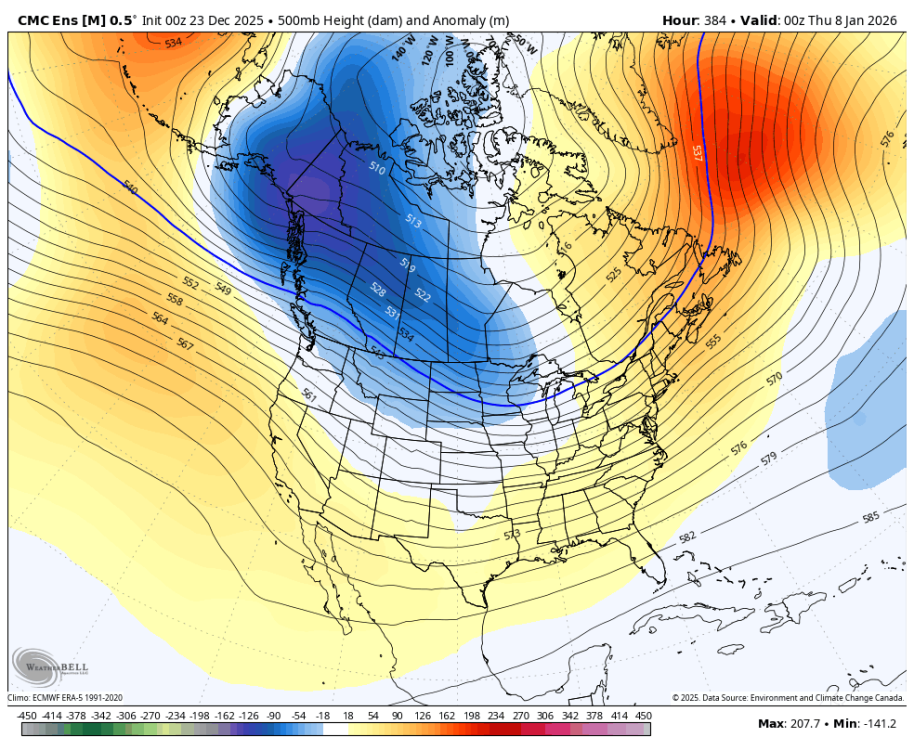
-
-
51 minutes ago, Roger Smith said:
Probably the way models are trending, it's becoming a question of whether the milder air ever makes it past central NJ but I think temps will spike at around 45F for a few hours late Christmas Day, then slide down into high 20s setting up a solid wall of icy resistance when the Friday wave drops southeast, could lead to a much heavier snowfall than forecasts are currently saying (can't say record because it's 78 years after 12-26-1947). A few days ago it was looking like a very mild two days 24th-25th and now it's looking more like a couple of hours of slight warming. Encouraging when the models bust on the warm side.
What about the 12/26/2010 snowstorm?
-
14 minutes ago, GaWx said:
It sure is. I already posted after the first storm a prediction of 21” minimum for Jan+, alone, in top of whatever Dec ends up with.
lol, January isn't coming close to 21 inches of snow. The snowiest January since the 2016 storm was 2022, and that was 15.3 inches, and 2018 is the only other year since then that has even topped 10 inches.
I'd be willing to bet that January ends up with less than 10 inches of snow and an above average temperature departure.
-
 1
1
-
-
80 degrees on 3/29/2025 was the best model forecast of the year:
-
Just like I did on 3/29/2025, when in doubt, go the the NWS, which says too warm for snow:
Christmas DayA chance of rain before 1pm. Cloudy, with a high near 44. Chance of precipitation is 30%.Thursday NightA chance of rain after 1am. Cloudy, with a low around 39. Chance of precipitation is 30%.FridayRain likely. Cloudy, with a high near 57. Chance of precipitation is 70%.Friday NightA chance of rain before 1am. Mostly cloudy, with a low around 39. Chance of precipitation is 30%.SaturdayMostly cloudy, with a high near 51.Saturday NightA chance of rain. Mostly cloudy, with a low around 39. Chance of precipitation is 30%.SundayA chance of rain. Mostly cloudy, with a high near 51. Chance of precipitation is 40%.-
 1
1
-
-
11 hours ago, RedSky said:
Small chance of snow on the 23rd
When will it snow it would be great to watch snow falling two days before Christmas- 2am-8am the same time every single time
The miracle White Christmas in 1998. Temperatures really torched that month, with 2 days in the 70s in the first week, and temps in the mid-60s as late as the morning of the 22nd. Then, temperatures fell throughout the day, leading to the snowstorm on December 23-24, 1998.
-
 1
1
-
-
-
-
1 hour ago, 40/70 Benchmark said:
March 2001 is another great analog.....maybe March 2023 with a less hostile Pacific.
Oh please, no March 2001. I would not wish that on any snow lover.
I'd prefer March 2017 as an analog.
-
16 hours ago, JTA66 said:
Early start to winter = early start to mud season.
46F
Does this mean an early start to spring?
-
5 hours ago, EastonSN+ said:
IF IF it happened that way, at least this December was better snowfall wise than 1989 lol. That year had a heartbreaking snow to rain storm in the middle of one of the coldest Decembers in history. 1989/1990 was probably the most disappointing in my lifetime.
2000-01 was the most disappointing in my lifetime. I know this one technically ended with above average snowfall, but the epic snow bust in early March left a very sour taste. Oh what could have been if the forecast had even come close to verifying.
-
 1
1
-
-
Today is the 5th anniversary of the December 2020 snowstorm. This weekend's snowstorm was the biggest December snowstorm since then.
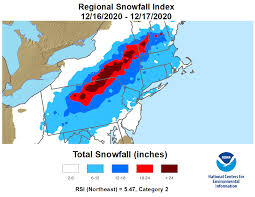
-
30 minutes ago, 495weatherguy said:
Don’t remember the torch. Remember the cold though. It was brutal
I was too young (about a year and a half), but the weather records show that the January 1990 average temperature was 15 degrees warmer than the December 1989 average temperature. That type of temperature jump is something you see from March -> April or April -> May. You don't see that in the dead of winter. It's like spring began in January that season.
-
 1
1
-
-
3 hours ago, bncho said:
Genuinely curious--could you provide some examples?
The most obvious ones are the most recent: 2016-17 and 2022-23.
2 hours ago, MJO812 said:Nothing
I have a hard time seeing a torch in January and February with a neutral enso going into el nino.
In case you forgot, here's what happened the last time a dissipating la nina led into an el nino:

-
 1
1
-
 1
1
-
 1
1
-
 1
1
-
-
11 minutes ago, michsnowfreak said:
Based on what?
Previous years with similar ENSO/IOD/PDO patterns. They tend to have cool Decembers, but torch in January and February.
-
 2
2
-
 1
1
-
-
3 hours ago, leo2000 said:
Yes, that looks to be happening and even if it gets mild somewhat in early January but that may not happen as models have been forecasting warm in the long range and it never materializes. I think we could have indeed some storm threats before Christmas and on Christmas itself.
January and February are going to torch. 16-17 is probably the best analog. This could be a great snow season if you live in Syracuse. Not so much if you live in Atlantic City.
-
 1
1
-
 1
1
-
 1
1
-

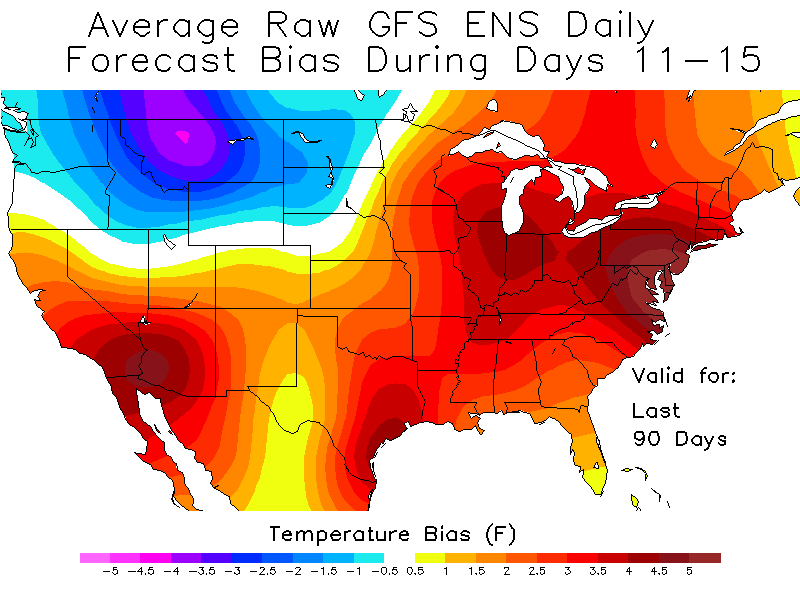


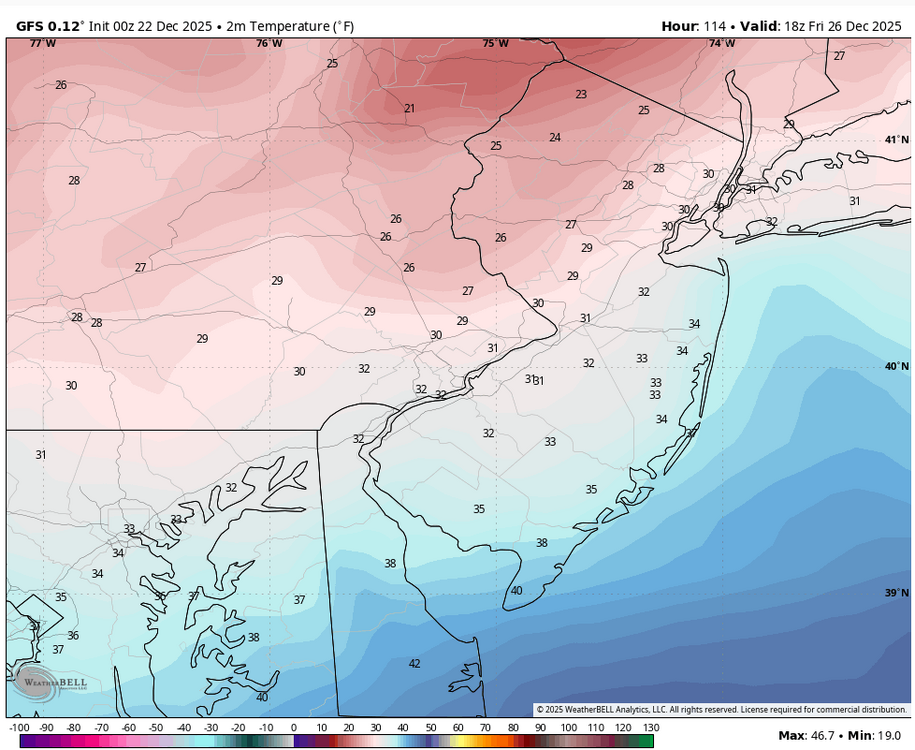
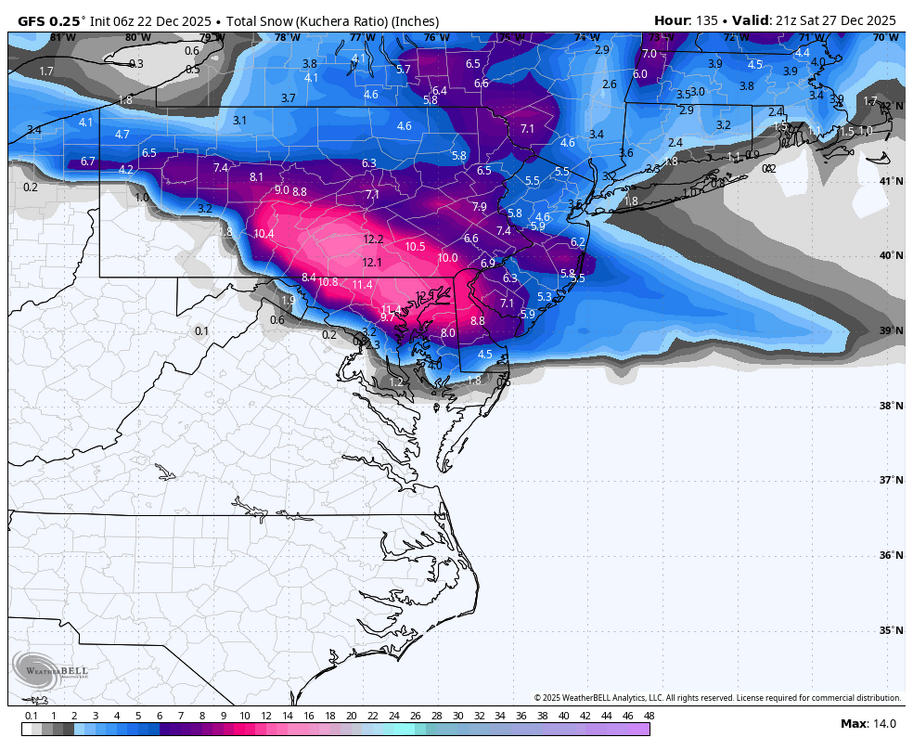


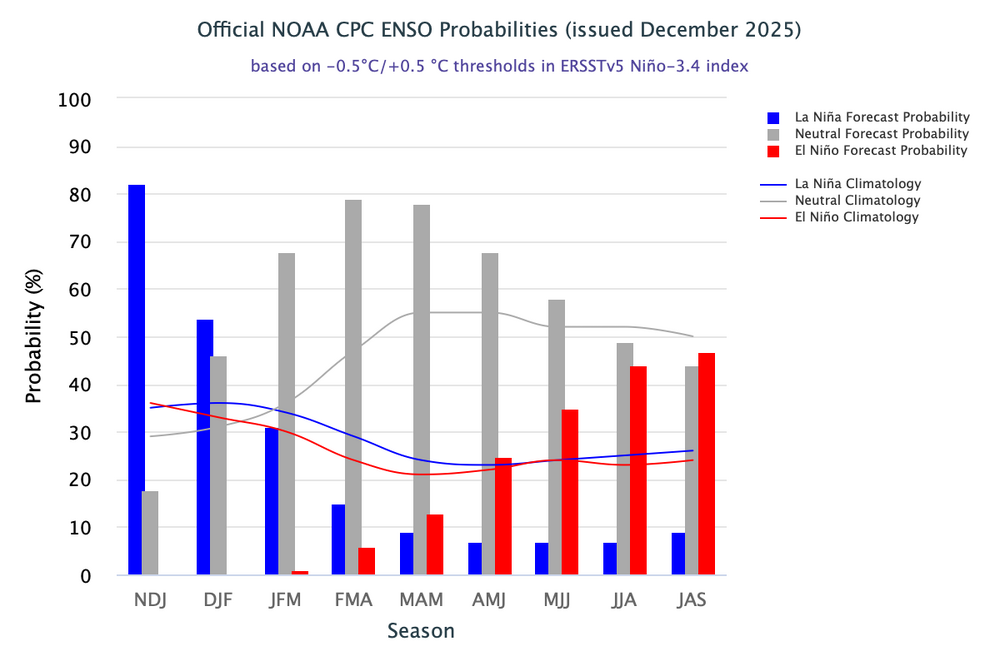

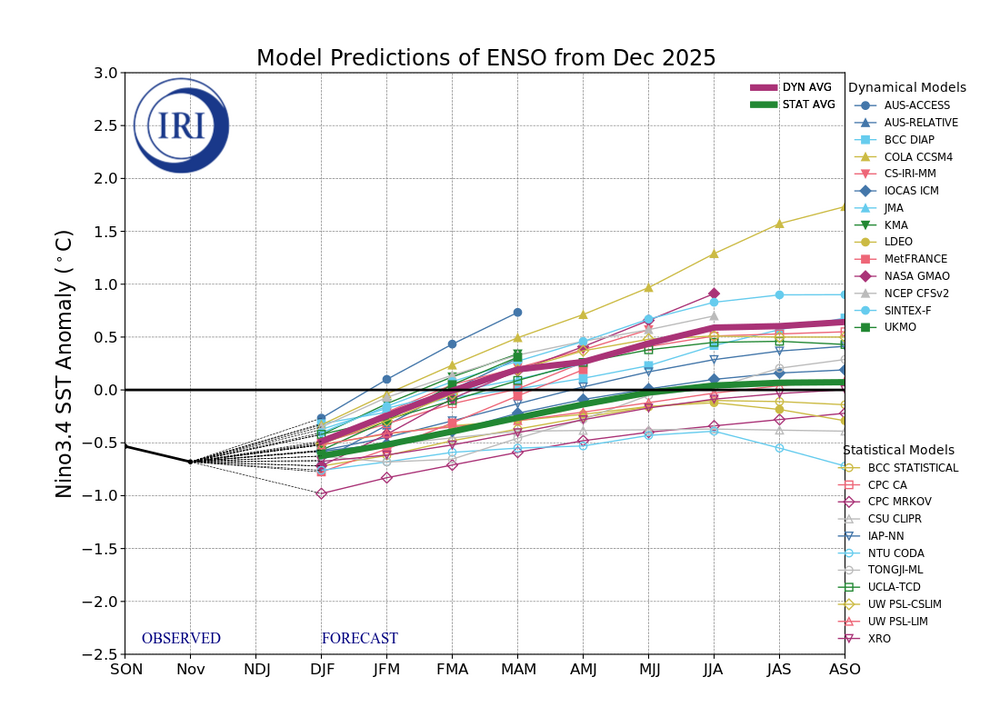
Snow Potential Dec 26-27
in New York City Metro
Posted
That has no correlation. NYC cashing in on a snowstorm doesn't mean everyone is going to win come January. For all we know, DC could end up with a final season snow total of 3-4" (see below).
That season had one of the oddest snow distributions ever. Places in upstate NY finished the season with over 150 inches of snow, while places like Baltimore and DC finished with less than 4 inches of snow.